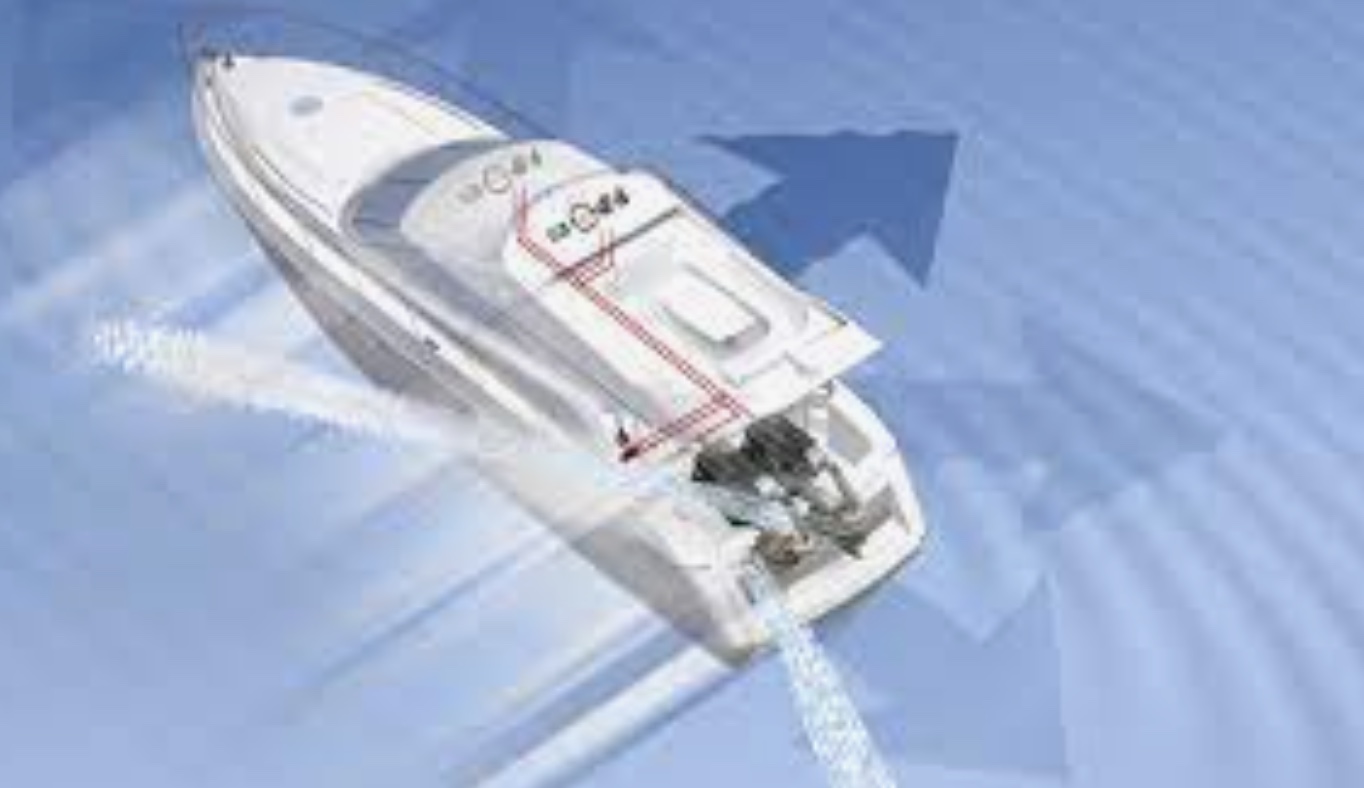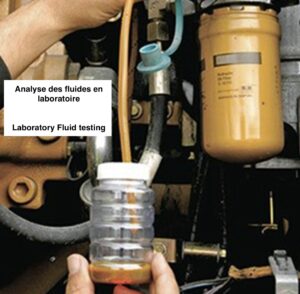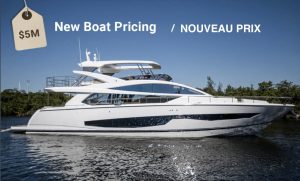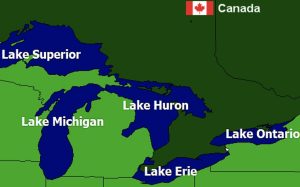JOYSTICK et PODS : IPS ou Zeus ?
Also available for Stern Drives and outboards …
( PODS IPS, PODS ZEUS and EVC DOCKING you AXIUS )





Yes, there’s been a bit of a revolution in the boating world when it comes to parking (docking) your boat with the advent of PODS and Joysticks, but let’s delve a little deeper into the subject.
Of course, joysticks have revolutionized the way we look at parking maneuvers once we’ve reached the marina. Boats over 40 feet were the first to be able to use this technology, but then the system or joystick thinking expanded.
In fact, it was only a matter of time before STERN DRIVES and outboard motors could also accomplish the same feats. This is what the two major manufacturers have achieved with Mercruiser’s Axius and Volvo’s EVC Docking System.
So it’s possible to have a joystick on boats fitted with Stern Drives in twin-engine configuration, or with two outboard motors (and more), and of course on the biggest boats, thanks to the use of PODS with IPS from Volvo and Zeus from Mercruiser/Cummins, as well as PODS from ZF.
ZEUS / IPS
Far be it from me to tell you whether one is better than the other. You’d have to have two boats to do the test, and even then. As the hull shape is also a decisive factor in propulsion configuration, it’s virtually impossible to compare two propulsion systems on the same boat. You’d need two hulls designed for the Zeus system and one for IPS.
Zeus Pods require a hull with tunnels, and IPS PODS without tunnels. So be careful when a manufacturer offers different propulsion modes with the same hull. Make sure the hull is adapted to its propulsion mode.
So you understand that comparison has its limits. Let’s say that today, you’re looking at two high-performance systems that will give you fuel savings and fewer emissions (diesel smells).
But since the 2020s, Volvo seems to be dominating the PODS propulsion market. In fact, manufacturers of boats 40 feet and over seem to prefer Volvo PODS, which promise to provide real assistance in parking maneuvers for years to come.
STERN DRIVES AND OUTBOARDS
In the case of Stern Drives (Volvo or Merc), you can also have an optional joystick called Axius for Mercruisers and EVC Docking System in the case of Volvo.
In short, thanks to the genius of the computer, the two stern drives, the outboard motors or the PODS will move independently of each other, forwards or backwards, so as to move the boat in the direction or position requested by your joystick. The boat will quickly obey your commands, no more and no less, when you’re in DOCKING mode, by moving the PODS (or feet or outboard) in such a way as to bring about the requested maneuver. Don’t forget to take into account the wind and current in the area where you’re maneuvering.
This technology also enables dynamic positioning. In other words, you can hold the boat in a stationary position at the touch of a button. This option is called Skyhook for Zeus (by Merc.) and Dynamic Positioning System for Volvo. This gadget is ideal for waiting for lock gates to open, or for lifting a bridge.
All outboard motor manufacturers offer a joystick made by themselves or by independent companies. So, for Mercury, Yamaha, Suzuki and Honda, you can have a joystick installed.
.
Shafts
Spurred on by the arrival of PODS technology, shafts-powered boats have also responded by developing a joystick that this time necessarily uses a front thruster and possibly a rear thruster to assist the boater in parking maneuvers.
Xenta, for example, has designed this type of joystick, as has Cummins and the manufacturer MTU. These joysticks are very powerful, but cannot be used for dynamic positioning (at all times) without the use of hydraulic thrusters. In fact, an electric thruster cannot operate continuously over a long period of time, as thermal protection will quickly render it inoperative if used for too long.
A boat powered by shafts and equipped with a bow and stern thruster coupled with a wireless remote control that both controls the thrusters and allows the transmissions to be controlled, the boater of this boat has nothing to envy to those with pods.
Cummins and other manufacturers have developed a more efficient thruster system to overcome this drawback.
photo: Propulsion with a shaft
Why PODS
One of the factors that has prompted manufacturers to adopt PODS technology is that a boat configured with PODS requires less space in the engine compartment, with the result that the space dedicated to bedrooms (on the lower deck) can be improved.
Manufacturers have developed safety devices in case you hit obstacles with your Pods. Of course, repairs will be more expensive than with propellers (mounted on shafts).
Although your boat will be equipped with a joystick, I strongly advise you to learn how to park your boat without it, in order to familiarize yourself in case the joystick system fails. Too many boaters find themselves in near-panic situations without their joystick, but with a little practice, it’s not very complicated.
Note that many manufacturers install a front thruster on their boats, even if they have PODS, just in case…
There’s a lot more to say, but we’ll confine ourselves to this brief article. PODS haven’t put shaker boats out of business, far from it, but they do have definite advantages. And don’t forget boats powered by jets and surface propellers. Each with its own very interesting characteristics.
In this article, we refer to the PODS known to all boaters. That is, IPS and ZEUS. But PODS have been around for much longer, and this type of propulsion system is used by other manufacturers for commercial yachts and megayachts. There are even PODS incorporating the motor, which is then submerged underwater for electric propulsion.
Popular boat brands such as Searay, Cruisers Yachts, Regal, Monterey, Prestige, Chaparral, Jeanneau, Beneteau, FourWinns, Marquis and Carver have been using this technology (Joystick and/or PODS) for several years now. Since 2010, it has been very common to find this type of propulsion, and some even earlier, since 2006.
Boats with this technology
So, think about it when choosing your next boat under 35-40 feet, and especially when buying second-hand. This technology is here to stay, so if you buy a used boat from 2008 for example, between 28 and 38 feet (express), when you resell it in 5 years’ time, you may find it hard to resell, given that almost all boats since 2010 have this propulsion system. Reselling a boat in 2024 (3 years from now) for this category of boat, without joystick, will seem rather difficult to me (unless the propulsion is with shafts). Just think about it.
Analysis of your needs and different systems
But there are now many boaters who, after having had PODS on their boat, will gladly go back to shafts. It has to be said that PODS are much more expensive to maintain than shafts, and in the event of a snag (with PODS), the repair period can be very long (several weeks or even months), and repair/replacement costs will be much, much more expensive than with shafts.
Personally, I prefer a boat with shafts when this mode of propulsion is available from the manufacturer. But for boats with outboard motors, a joystick is almost mandatory, especially in a resale context.
VOLVO PODS IPS PODS ZEUS
In summary, here are the advantages of PODS (Zeus or IPS):
– fuel economy
– improved agility
– less noise
– less vibration
– fewer emissions (diesel smells)
– dynamic positioning
For stern drives and outboards, the boat’s behavior remains the same in sailing mode, while the joystick makes docking maneuvers easier for beginners and, of course, dynamic positioning.
Major yacht manufacturers have developed solutions to achieve comparable advantages with shifting technology, such as underwater exhaust systems and high-performance joystick solutions.
It’s important to remember, however, that shafts are a simple and highly effective technology.
As soon as the boat reaches a certain weight and size (especially the fly), very few manufacturers install PODS, preferring shafts with high-performance thrusters.
If the yacht is large and the manufacturer chooses PODS, he can then set up a configuration of 3 or 4 engines with PODS to obtain a more optimal performance compared to two engines with shafts.
DISCLAIMER
The article presented on this page is for information purposes only. This information is provided as editorial (i.e. opinion). The information presented in this article is presented in good faith and, while believed to be correct, is not guaranteed. Ita Yachts Canada does not warrant or assume any legal liability or responsibility for the accuracy, completeness or usefulness of the information and/or images displayed, as they do not suggest anything in relation to this article, indeed no association can be made with respect to the images and the article. All information in this article is subject to change without notice and is without warranty. It is the reader’s responsibility to verify the descriptions and statements contained in this article. The brokers at Ita Yachts Canada assume no responsibility for any conclusions the reader may draw. The purpose of this article is to promote boating in all its forms. It gives one point of view among many.
Views: 88














